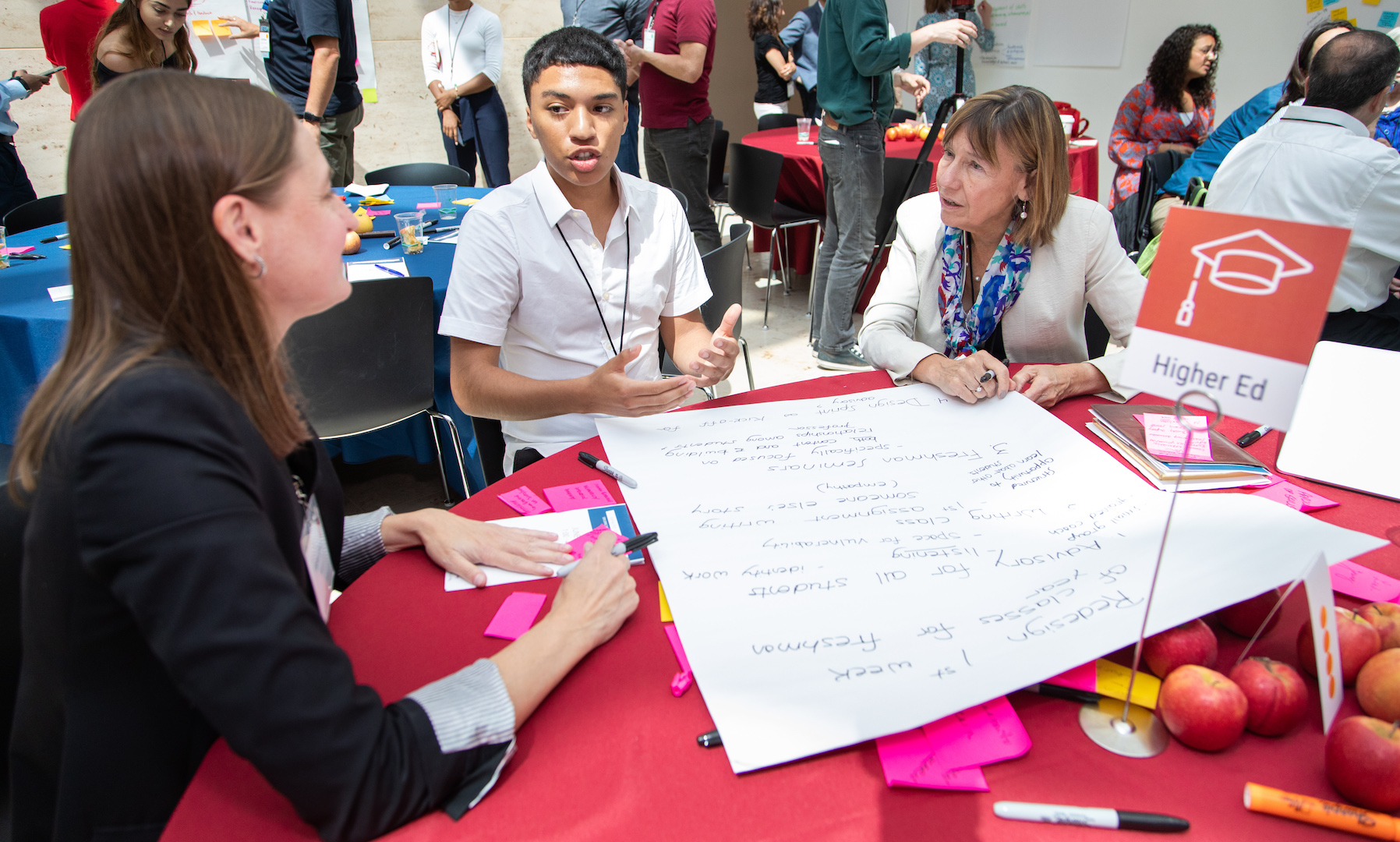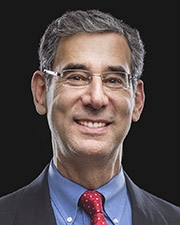Catalyst Conversation asks what the future of learning and work will look like
Technology continues to transform society and our lives. How can schools and educators adapt to prepare children growing up in the midst of this fourth industrial revolution?
That was the question Catalyst @ Penn GSE asked when it brought together educators, entrepreneurs, business leaders, policymakers, and students on June 23 for a conversation exploring the future of work and learning. The conversation, co-hosted by Getting Smart and the International Society for Technology in Education (ISTE), included a mini design sprint to get people thinking about what new approaches might be possible in K-12, higher education, and adult learning.

“As the workplace has changed, education has changed a little less quickly,” Penn GSE Dean Pam Grossman said. “Even as the workplaces of the future demand collaboration and teamwork, you see all too many classrooms where kids are sitting passively in individual seats waiting to be told what to do. That’s not the workplace of the future, and we’re not preparing kids if that is their experience.”
Asking people with a wide range of expertise to collaborate was crucial, said Michael Golden, Executive Director of Catalyst @ Penn GSE, because there is not a single answer to solve all problems. Students, who are often not asked about their experiences, need to have a seat at the table, Golden added.
Tom Vander Ark, Getting Smart’s CEO, said he spent most of his career working with technology in the fast-paced information age. But the rate of change in the coming decades will only increase exponentially.
“We’re living in a new era where artificial intelligence has taken the information age and cranked it up to hyper speed,” Vander Ark said. “Today’s young people have a high school experience of rigidity and compliance while their lives are about novelty and complexity. How do we create human development systems that prepare them not just to survive but thrive in these new environments?”
The student perspective
To answer the question, conversation participants turned to high school students from Philadelphia, North Carolina, and Idaho, and Taliq Tillman, the co-founder of Diversity Speaks, who had just finished his freshman year at Dartmouth College.
As Tillman described how traditional models of education often marginalize or oppress students of color like him by making faulty assumptions about what they can and can’t do, other students in the room nodded along. The difference in his life came when he enrolled in the MET High School in Providence, Rhode Island.
“The teachers actually listened to me,” Tillman said. “I had four years where I had the same advisor, and I was able to text him whenever I needed him. When I was applying to colleges, he actually came to my home because he understands that students like me just need someone to believe in them, to tell them you are good enough, that despite everything you have been through, you are smart, you are intelligent.”
Working in small groups, the students then described their lives and their schools. Yonas Kemal, a rising senior at a traditional public high school in Apex, North Carolina, told his group about District C, a non-profit that encourages student entrepreneurship and education. Through District C, Kemal did after-school internships that led to other working projects. He said he’s learned professional skills that will help him get into college but also succeed in a career.
“I’ll have homework to do and an essay to write, but I’ll also have a website to build,” Kemal said. “It’s not all school, but I’m learning so I put it all on the same level. It can be a challenge, but a good challenge.”
A design challenge
The students and other participants collaborated on the design challenge: Create a one-week curriculum that addresses some of the needs that came up during the student interviews.
The proposals ranged from a deep dive into Newton’s third law of motion, to a performance for hospital patients, to reimagined orientation for college freshmen.
Avi Burstein, a student at Philadelphia’s Science Leadership Academy, told his group how hard it had been for him to find his summer job at a water ice stand. He felt lucky since many of his classmates were still looking for jobs. The group created a week long introduction to job searching based in part on what had worked for Burstein.
The lessons wouldn’t just help students get summer jobs, Burnstein said. They’d learn skills like networking that would help them throughout their careers.
Other curriculums were designed to help students cultivate team-work, collaboration, and problem-solving skills. Those will only become more important in the future, said Danielle Goonan, of the Rockefeller Foundation.
“We need to think about how we prepare people for continuous evolution, so they can keep changing as the economy changes,” Goonan said.
The conversation didn’t end on June 23. Catalyst @ Penn GSE is gathering participants’ ideas to continue the collaboration about the future of learning.

